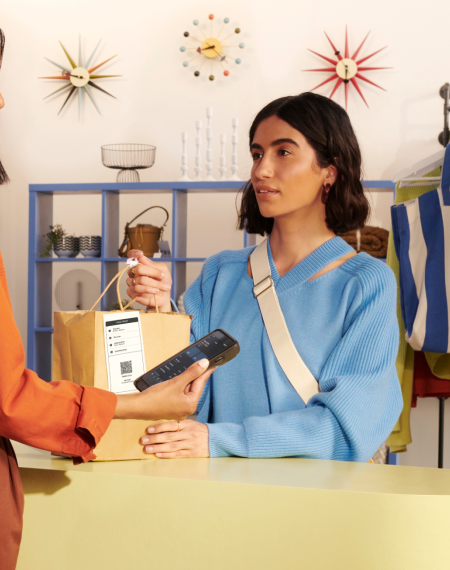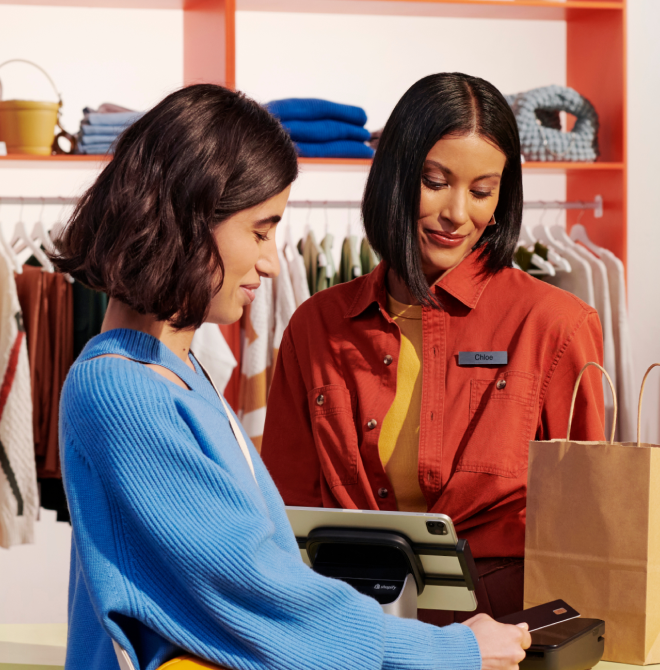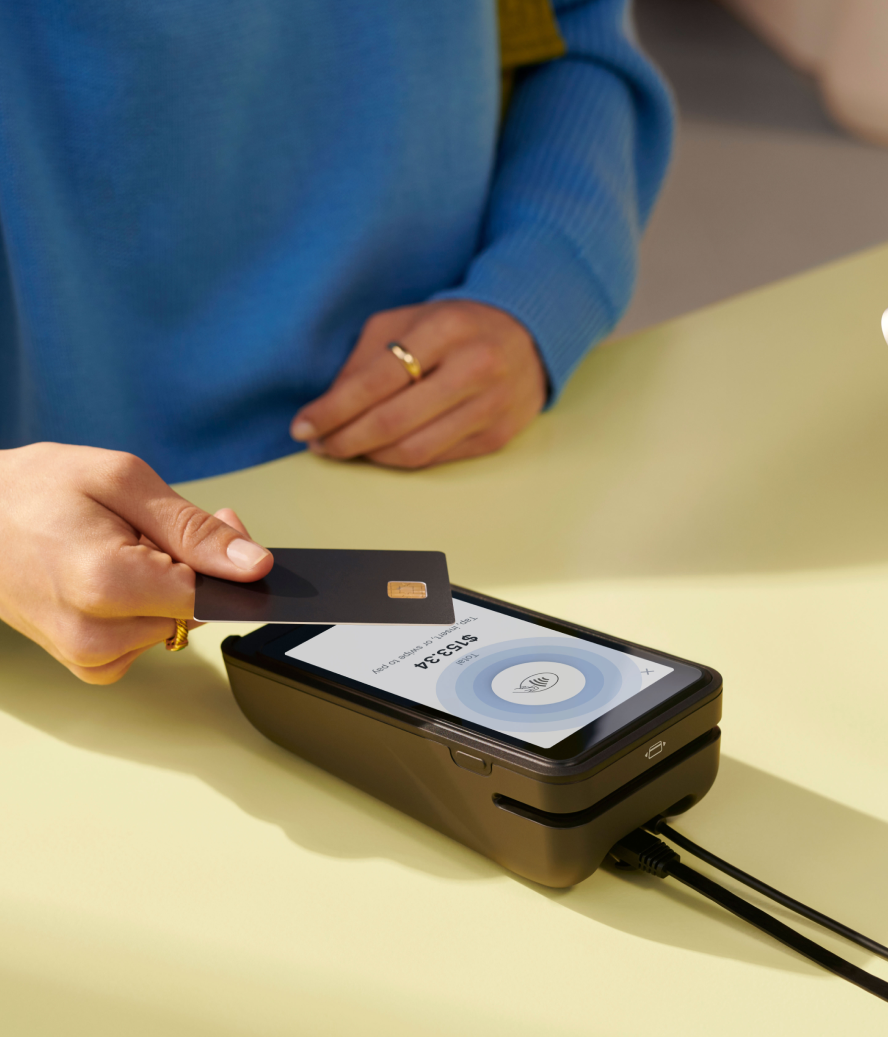Walk into the Lively store in SoHo, New York City, and you’re welcomed by tropical greenery, plush carpets, and lounge chairs hanging from 10-foot wooden beams. It feels more like a clubhouse than a lingerie store, and that’s exactly the point.
A sales associate greets you, beverage in hand as she takes you to a bra fitting. But before getting out the tape measure, she’ll ask about your lifestyle, activity level, and style. The whole shopping experience feels deeply personal, like you’re hanging out with a girlfriend—hence why most ladies walk out with four bras after a fitting.
The idea that a personalized one-on-one experience can increase sales and influence consumer behavior isn’t novel. Yet there’s a retail personalization gap: recent data shows 71% of consumers expect personalization, and 76% grow frustrated when it doesn’t happen.
This guide shares how personalization in retail works, with practical use cases and personalization strategies to demonstrate its value.
What is personalization in retail?
Personalization in retail happens when brands tailor the shopping experience to individual customers. By taking into consideration factors such as a customer's past purchases, preferences, and behavior, retailers can provide more personalized product recommendations and offers that are more likely to lead to a sale. This approach helps enhance customer loyalty and trust.
Examples of personalization in retail
Retail businesses don’t need a sophisticated tech stack or a huge budget to create a personalized digital customer experience. You can use a broad range of information—like demographic data, purchase history, browsing history, hobbies, interests, birthdays, or likes and dislikes—to tailor some aspect of the customer journey. Here are some examples.
Personalized product recommendations
A customer can walk into your retail store with no idea what they want to buy. Perhaps they have a solution they’d like to solve or a person they’d like to buy a gift for. Personalized recommendations use retail associates’ product knowledge to help customers shortlist options.
Personalized product recommendations work by using first-party data such as:
- Browsing history
- Purchase history
- On-site search queries
Shopify merges this first-party data into a unified customer profile. Store associates can reference single customer views from their Shopify POS device to paint the full picture of their retail customers, using their browsing or purchase history to offer personalized recommendations from the outset.
Tailored discounts
Discounts are powerful levers that influence consumer’s purchasing decisions. Instead of blanket deals that risk sabotaging profits when you don’t need to, personalization in retail helps identify which discounts a customer is most receptive to. It pairs their promotion with a tailored message that convinces them to buy.
For example, a segment of customers who previously used a buy online, pickup in-store (BOPIS) service clearly like the convenience of online shopping, but not waiting around for delivery. Offer them free local shipping to incentivize a repeat purchase.
Similarly, people who’ve subscribed to your email list but have not yet made a purchase could receive a 10% discount code to redeem on their first order in-store.

Dynamic pricing
Dynamic pricing uses smart retail technology to adjust prices in real-time based on factors such as demand, competition, customer behavior, or market conditions. It helps retailers maximize profit by charging the optimal price a customer is likely to pay.
You might learn, for example, that first-time customers are more price sensitive, or that shoppers are less likely to spend money on a rainy day. Dynamic pricing uses this insight to tweak electronic price tags in-store and maximize profits.
Birthday or anniversary promotions
The less you can rely on new customer acquisition to generate revenue, the more sustainable your retail business becomes.
Birthday and anniversary promotions are a type of personalization in retail that helps customers build stronger relationships with your brand. Marketing automation tools like Shopify Flow can detect when their birthday is and send a special gift, like a free product or exclusive discount on their next order. A time limitation on when this can be redeemed adds an extra layer of urgency that convinces them to buy sooner rather than later.
How to offer personalized experiences in retail
Collect customer data
Though you might see ecommerce and physical retail as two distinct channels and departments, it’s all the same in the eyes of the customer. This idea of unified commerce—a fully integrated online and offline retail brand experience—allows retailers to put customer data together and paint a bigger picture based on all inputs.
Build unified customer profiles with information from all your data sources—email list, point-of-sale (POS), in-store sign-up sheets, and whatever else you use to store customer info.
Make note of:
- Name
- Address
- Age
- Phone number
- Birthday
- How they hear about your store
- Who helped them during their in-store experiences
- Who they typically shop for in your store
Dig deeper by looking at transactional customer data. For example, see which products shoppers frequently purchase together or successively. Your point-of-sale (POS) system's data should be able to tell you these types of insights to help inform your personalization strategy.
💡 Tip: Digital receipts and email carts are great ways to organically collect customer contact information at checkout. Email capture inside Shopify POS can also pair customers’ payment details with a Shop Pay account and gather marketing consent at checkout.

Segment your audience
Segmentation divides your customer profiles into groups depending on the characteristics they share. This could be anything from event attendance to product categories they’ve bought from and retail stores they’ve visited. This type of segmentation is the foundation of personalization in retail.
Here’s a scenario as an example: you sell running gear and host an in-store event to promote a new sneaker. A few weeks later, you introduce running shorts from the same brand.
Knowing that event attendees have some level of interest in that brand, you can launch an email or SMS campaign targeted at those individuals. Your messaging might be something along the lines of, “Hope you enjoyed [Brand]’s sneaker debut! We just launched their new shorts—come check them out in-store.”
Implement automated marketing campaigns
Omnichannel marketing is key to personalized in-store experiences. Where email is standard practice for many retailers, consider getting more personal and connecting with customers via text or by phone to remind them to visit your brick-and-mortar location.
Other opportunities to leverage omnichannel retail and create more personalized in-store experiences include:
- Back-in-stock/out-of-stock reminders. If a customer visits your store in search of a specific product and you don’t have it, train associates to note in the POS system to add them to the back-in-stock notification campaigns. Likewise, if a product a customer frequently purchases or expressed interest in is going out of stock, send a targeted, automated campaign.
- Price changes. Notify customers when products go on sale. Create segments based on product categories or purchase history to target campaigns and product recommendations to different customer groups.
- Event notifications. If you have an event series or plan to host future events similar to previous ones, create a segment for event-interested shoppers. Send them emails and SMS messages about upcoming events your store is involved with.
- Flash/VIP sales. Identify top spenders and send them exclusive offers and discounts. Consider hosting and promoting extended VIP shopping hours or VIP-only sales.
💡Shopify POS retailers experienced an equivalent omnichannel sales growth of +150% quarterly on average year over year, according to a leading independent consulting firm.
Customize promotions and discounts
Blanket discounts have their time and place, but when it comes to retail personalization, retailers are better served tailoring these incentives. Half of consumers say personalized offers from brands they’ve interacted with improves the shopping experience.
A straightforward way to personalize offers is to refer back to the customer data you already have. Here’s an example: if a customer purchased lipstick once before, you might then send them a coupon for 30% off their next purchase of that same brand. Or, knowing that lipstick should be changed annually, you can offer a discount on any lipstick in your store 11 months from the date of purchase. Both encourage in-store exploration and product discovery.
Personalized discounts and promotions should apply, regardless of which channel a customer chooses to complete their purchase. Use Shopify Discounts to define coupon codes and qualifying criteria, then roll them out to every integrated sales channel—ecommerce and POS included.
“Our online promotions absolutely drive in-store sales and vice-versa,” says Natalie Shaddick, VP of ecommerce at Mizzen+Main. “When we advertise our promotions, we always highlight them being available online and in-store, and we see a huge spike in retail traffic and sales at the same time as ecommerce, so we know the two channels are talking to each other.”
Help store associates make personalized recommendations
Much like promotions should be targeted, product recommendations should be, too. More than 40% of consumers say they expect staff in a brand’s physical store to know their online purchase history—but only 19% have actually experienced this.
The best solution is to equip staff with a mobile POS so they can quickly access unified profiles and purchase histories across channels to deliver this one-to-one experience that’s now become the default customer expectation.
A few simple ways your employees can make more informed recommendations include:
- Analyzing POS data. Determine which products are frequently purchased during the same transaction. Once your staff has that data on hand, they can make recommendations in person while customers shop or when they check out.
- Asking about lifestyle and interests. Staff should take the time to understand a customer’s preferences and work with them to find the product that best fits their needs.
- Asking about upcoming events or milestones. Encourage associates to proactively ask about upcoming events that could influence the products customers are looking for.
- Use Shopify apps: Apps like Marsello and Frequently Bought Together integrate with Shopify POS and recommend products to store staff based on what they’ve added to a customer’s cart, making it easier than ever to suggest relevant products, and increase basket sizes and order value.
Luxury fashion retailer Diane von Furstenburg migrated from Salesforce to Shopify to give store associates access to this data. “We had to build custom reports using data from two systems, but now I can click on the customer’s profile and see it all there,” says assistant store manager Joanna Puccio. “I can see what a client bought, returned, their typical sizing, color preferences, even notes our staff add to their profiles—Shopify makes it easy to view customer information.”
Challenges of personalization in retail
Siloed data
Effective personalization in retail hinges on the connection of your data sources. If information sits in isolation in different systems, you risk reaching out to customers with a personalized message at the wrong time, with the wrong message. Some 43% of retail organizations with these disjointed systems say it “makes life difficult.”
At the very least, your systems should have real-time data synchronization with a customer data platform.
Unified commerce takes this a step further. Instead of patchy middleware inflating ownership costs and causing technical drag that hinders innovation, it natively builds everything on the same infrastructure by default. Shopify is the only platform that can do this natively.
A leading independent research firm found retailers using this functionality in Shopify POS benefit from:
- 27% reduction in middleware expenses
- 34% lower data migration and transition costs
- 20% faster implementation time
Poor alignment
Marketing, sales, and customer service teams each work from their own systems, often with different approaches to data capture. Poor alignment between these departments can mean the data you’re collecting for personalization is inconsistent.
Set clear guidelines for how you collect and store customer data. For example:
- Do you include middle names in the “First name” field?
- Do customers’ birthdays follow date/month or month/date formats?
- Do you include spaces when inputting a customer’s phone number?
Shopify solves this problem by unifying data on one commerce operating system. Set custom POS metafields and convert date formats, address fields, and currencies as soon as data arrives so that every department is working from the same consistent customer data.
Omnichannel personalization
It’s one thing to pull up a unified profile and offer a personalized customer experience based on products they’ve previously bought in-store. It’s another thing to use that customer data across every touchpoint—including your ecommerce website, social media, and email marketing campaigns.
Omnichannel personalization requires real-time data synchronization and automation to work at scale. With Shopify, for example, you can:
- Unify customer data from multiple sources in a single commerce operating system.
- Create segments from that data, which automatically update when data from a customer’s unified profile changes (e.g. moving them out of a “first-time customer” segment when they make a second purchase).
- Deploy automated marketing campaigns, such as email campaigns with Shopify Email or third-party apps like Klaviyo, that are specific to each customer segment. You can even create custom audience lists with Shopify Audiences and export them to retail media networks for more granular targeting.

Consumer privacy concerns
Despite customers calling out for personalized experiences, conflicting privacy concerns cause them to guard the information that makes it possible for retailers. A recent study found that half of US consumers would keep data collected about them in private if they controlled it—yet the same amount would be willing to share their data if it led to better experiences.
Retailers need to do more to ease these concerns in order to collect customer data. Here’s what that might look like in practice:
- Being explicit with the value customers get in return, such as a personalized product recommendation in exchange for first-party data contributed through a quiz.
- Developing a data protection policy that outlines how you collect, store, and use customer data.
- Using a customer data platform that makes it easy to delete customer data upon request.
Personalize the entire retail experience for your customers
Personalization in retail is an effective way to drive foot traffic and boost in-store sales. If you can add any level of these modern personalization techniques into your retail strategy, you’ll be steps ahead of most other brands.
Shopify POS lets you expand your personalization efforts by unifying your customer data on a single operating system, then create segments to personalize marketing campaigns based on the most valuable asset you have: first-party data.
The best part? It all happens without patchy middleware or complex integrations—just a commerce operating system that already powers the POS your retail team knows and loves.
Read more
- Bricks to Clicks: How to Move Your Brick-and-Mortar Business Online
- How To Count and Leverage Footfall To Increase Sales
- How to Measure Your Store’s Marketing Results (Hands-on Tips)
- How to Use Retail Analytics to Improve Store Performance
- What is Average Basket Size and Why Does It Matter?
- Retail Forecasting: A Simple Guide to Predicting Foot Traffic for Small Business Owners (+ Template!)
- Revenue Per Employee: How to Calculate and Improve Your RPE Ratio
Personalization in retail FAQs
What is the value of personalization in retail?
Personalization in retail has a significant impact on customer satisfaction. Not only can shoppers find the right products through tailored recommendations, but they can also redeem loyalty rewards and promotions that are specific to their needs and wants.
What are the 4 D's of personalization?
The four Ds of personalization are data, decisions, design, and distribution. With all four, retailers can offer tailored customer experiences at scale.
How to create a personalized shopping experience?
To create a personalized shopping experience, standardize how you collect customer data. Build unified customer profiles for each shopper, then use this information to divide your audience into segments. You can use this to deploy personalized marketing campaigns at scale.
What is personalized shopping?
Personalized shopping happens when retailers use data they’ve collected on customers to tailor the shopping experience. This can include personalized product recommendations, birthday promotions, and exclusive offers.





